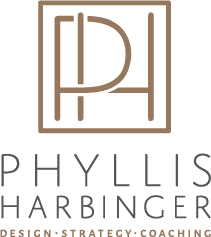Protecting Designers in a Changing Landscape
As the furniture industry in High Point undergoes transformations with the closure of several established manufacturers, designers must adapt and take steps to protect themselves in this changing landscape.
Just a few weeks ago we learned of the demise of Mitchell Gold + Bob Williams. As more manufacturers are creating relationships with private equity firms, we as designers run the risk of not being able to fulfill orders, losing deposits and putting our relationships with our clients in jeopardy.
Private equity firms are purchasing and or funding several of the manufacturers we rely on as trusted vendors for our clients. While the recent closing of MG+BW devastated many designers with open orders, it prompted all of us to become more educated and aware of the vendors we are aligning with.
The involvement of equity firms often brings about changes in a company's operations and financial structure. While they may promise to infuse capital and expertise to spur growth, their ultimate goal is to generate returns on their investment. This can sometimes lead to strategic decisions that prioritize short-term gains over long-term sustainability.
As we saw with MG + BW, the private equity acquisition impacted both the brand's identity and customer base. Prior to shuttering, they experienced many cost-cutting measures, compromising both quality and customer service. The rapid expansion with the infusion of capital also produced excessive debt.
These trends have left both designers and our clients disillusioned with once-beloved brands. Furthermore, they have had a negative impact on the furniture industry as a whole. Add to this the impact on the small, independent makers and artisans, who still place craftsmanship and quality over profit and expansion. They are truly challenged – competing in a landscape dominated by large, equity-backed corporations.
As we navigate uncharted waters, we have to rely on both old-school tactics and the use of current technology, to protect ourselves and our clients. How can we safeguard our clients as we procure? Let’s look at some of the ways we can set ourselves and our clients up for a more successful outcome:
Diversify: Gone are the days when you could feel safe giving huge orders to one or two suppliers. You really must diversify. Even if you have always had great success with a single manufacturer, it can be risky, as demonstrated by recent closures, to place all orders with one supplier. Most designers have a robust list of preferred vendors and by specifying and working with multiple manufacturers and reps, designers can reduce their vulnerability to disruptions in the supply chain and sudden closures.
Ensure Quality Control: Our clients hire us for many reasons, and one is certainly the expectation that we will have a cadre of quality sources that we have built relationships with over our years in business. We always manage and try to exceed our clients’ expectations. What sets us apart is our high standards and the mandate to specify products that exceed, surprise and delight our clients. Quality remains a key selling point for designers, and delivering on this front can set you apart.
Support Local Small Business: Explore local or regional vendors and create meaningful partnerships. Perhaps they are suppliers, or they represent manufacturers. Supporting local artisans and smaller manufacturers can foster a more personal relationship, ensuring that you have a resource for unique and high-quality pieces and a great connection with your vendors.
Read, Listen and Watch: As a designer, it is our duty to stay informed on industry trends and what is happening in the news. Whether you read, listen to podcasts, or watch the news, you must create an awareness for you and your team about the financial landscape of manufacturers and suppliers you are giving your business to, and research any changes in ownership or operations that might impact your projects.
Legal Tips: Consult with legal experts to ensure your contracts with manufacturers include provisions for recourse in case of non-performance or unforeseen closures.
When we look at the recent closures of large High Point furniture manufacturers, we have become acutely aware of the importance of adaptability and taking proactive measures in our purchasing strategy. By diversifying with our vendors, placing quality above quantity, and doing everything we can to stay abreast of the current economic climate in our industry, we as designers can better protect ourselves and our clients during this unprecedented time in our history. One filled with change and uncertainty. We have all been warned, begin and nurture strong relationships with reliable, local and regional partners and create a new multi-pronged strategy in this evolving situation.

